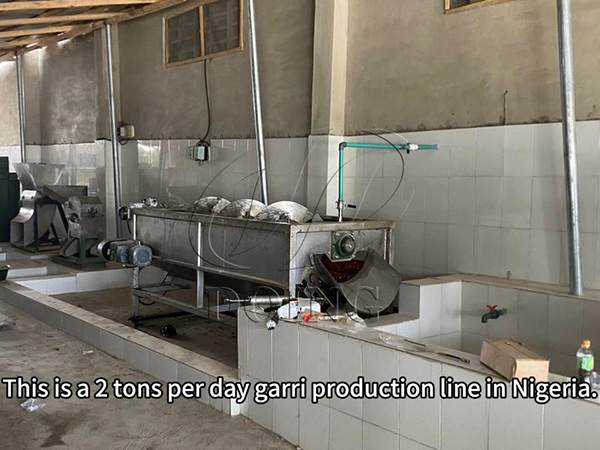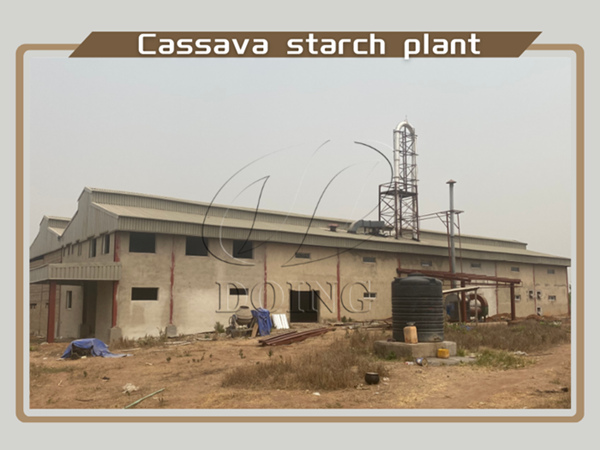
What is the gari production process?
FAQ/ Chat online/ Leave a message/ November 9, 2019
Gari is dry, crispy, creamy-white and granular. It is estimated that 70% of the cassava produced in Nigeria is processed into gari. As a result, gari is the most commonly traded cassava product. The gari prices, therefore, are a reliable indication of the demand and supply of cassava. Other relevant processed cassava foods in the traditional (food) market include fufu, lafun and abacha. In Nigeria, mechanized cassava processing is still on the developmental stage and the potential is very high.
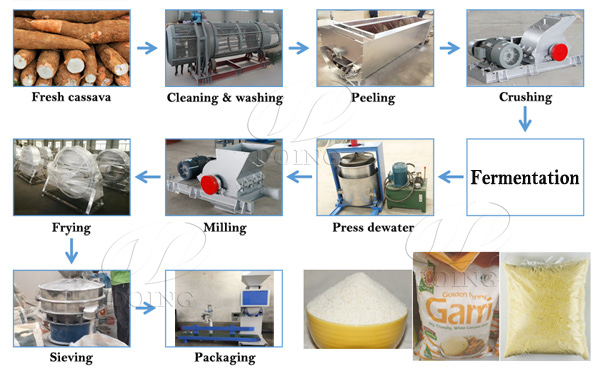 Garri production process
Garri production process
The main steps in garri production process involves:
1. Sorting the cassava tuber: After harvesting, some roots may be damaged or rotten. These are sorted to select the wholesome roots for processing; only healthy roots (without rot or other damage) should be processed.
2. Cassava washing and peeling section: Freshly harvested cassava roots are covered with soil and dirt and. The roots are peeled in garri production process to remove the outer brown skin and inner thick cream layer and washed to remove stains and dirt. The water source should be checked regularly to ensure it is not dirty or contaminated.
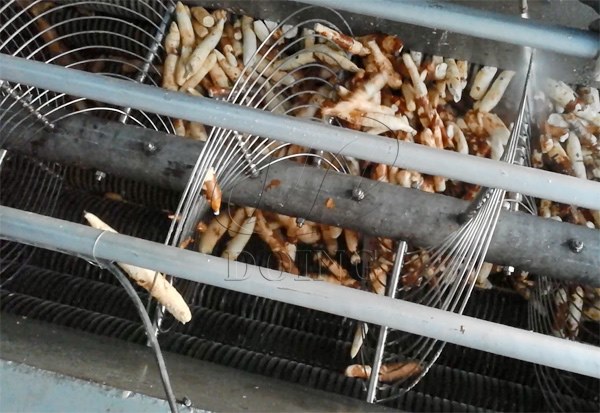 Cassava peeling and washing machine
Cassava peeling and washing machine
3. Cassava grating section: As part of the process to remove the cyanide and make the root safe to eat, the peeled cassava are grated into a mash or pulp. Mechanized graters are needed in garri production process to produce a sufficient quantity of cassava mash to meet market demands and standards.
4. De- watering and fermenting section: This completes the process of removing cyanide from the cassava mash. The water content in the mash is reduced using hydraulic press. The bags are then left to drain and ferment for a few days.
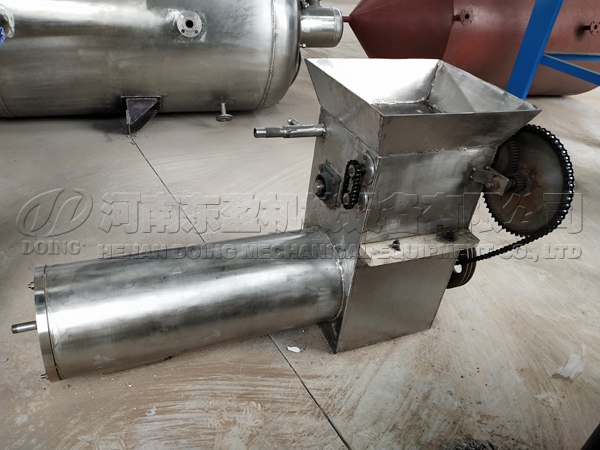 DOING stainless steel cassava grater
DOING stainless steel cassava grater
5. Granulating section: The cake is mechanically reduced in size to produce fine granules of greater surface area – known as grits.
6. Gari frying section: The grits are then roasted or fryed in a hot frying tray or pan to form the final dry and crispy product. Gari is normally white or cream, but will be yellow when made from yellow cassava roots or when fried with palm oil. It is important to make sure the taste and smell is acceptable to local consumers. Yellow cassava roots and palm oil are rich in vitamin A and therefore make nutritious gari. The roasted gari are spread on a raised platform in the open air to cool and dry.
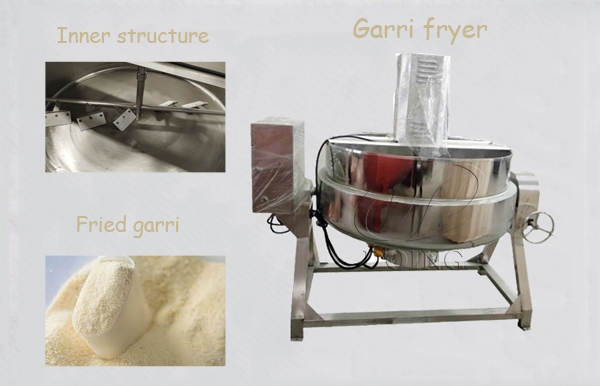 Garri fryer
Garri fryer
7. Sieving section: The Gari is sieved to separate coarse particles, with a standard size sieve to produce fine granules. A grinder is used to break the large granules into smaller ones.
8. Garri packaging: The gari are weighed and then packed for marketing. My company can supply the cpmplete set garri production process and the garri processing machine. If you interested in our garri processing machine, please contact us freely. My engineers will give you a feasibility program according to your demand.
Leave A Message
- Do you want to buy machine?
- Yes, I want to buy machine
- No, I want to learn more in advance.
- What is your raw material?
- Cassava
- Potato
- Sweet potato
- Others
- 2. What is the final product you want to produce?
- Garri
- Cassava flour
- Cassava starch
- Cassava chips
- Attiekie
- Bammy
- Others
- 3.What is your capacity plan?
- Small scale garri machine
- 1ton per day
- 2tons per day
- 3tons per day
- 10tons per day
- 20tons per day
- Others
- 3.What is your capacity plan?
- Small scale
- 5tons per day
- 10tons per day
- 20tons per day
- 50tons per day
- 100tons per day
- Others
- 3.What is your capacity plan?
- Small scale
- 5tons per day
- 10tons per day
- 20tons per day
- 50tons per day
- 100tons per day
- 200tons per day
- 300tons per day
- Others
- 3.What is your capacity plan?
- Small scale
- Middle type
- Large scale
- What is your capacity plan?
- Small scale
- 5tons per day
- 10tons per day
- 20tons per day
- 50tons per day
- 100tons per day
- 200tons per day
- 300tons per day
- Others

